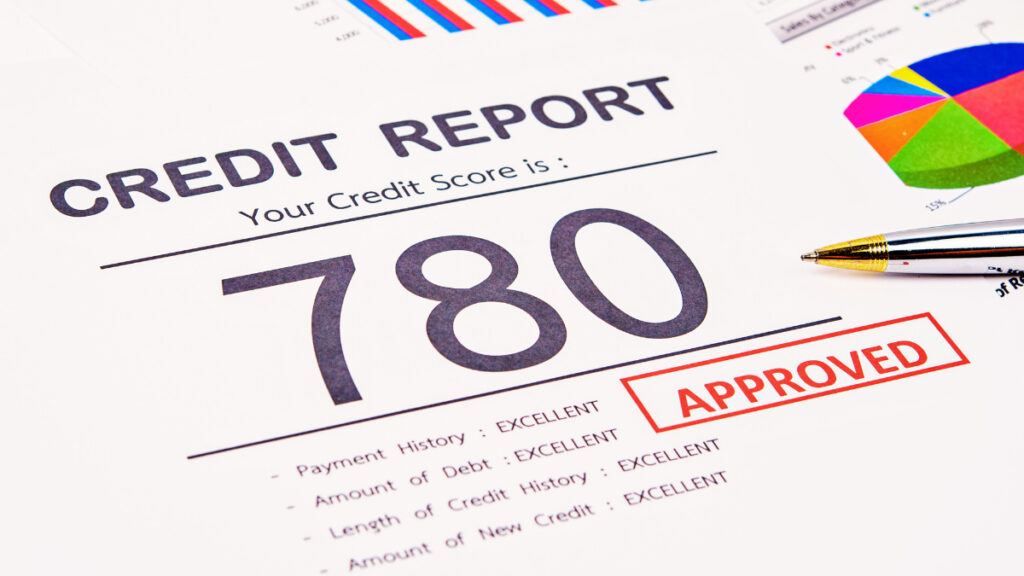Loans
Understanding Your Credit Score Before Applying for a Loan
Empower yourself with knowledge of your credit score before applying for a loan in Canada. Find actionable steps, real scenarios, and expert insights to boost your approval odds.
Advertisement

Money worries sneak up when you least expect, especially if a new expense pops up and you consider borrowing. Knowing your credit score matters before seeking a loan.
A strong understanding of your credit score boosts your confidence and improves your chances when applying for loans in Canada. It isn’t just a number; it shapes your financial opportunities.
This article details practical ways to evaluate, manage, and improve your credit score before you submit that loan application. Let’s ensure you’re fully prepared and informed.
Spotting the Real Impact of Your Credit Score on Loan Approval Decisions
Recognizing the exact ways your credit score affects whether a lender says yes can guide your next steps. This section offers scenarios and actionable comparisons.
Banks and credit unions rely on credit scores to judge loan risk. A higher score lowers risk for lenders and typically leads to better loan offers in Canada.
Understanding Credit Score Ranges and Their Consequences
Suppose your score sits near 650. An agent may say, “You’re eligible, but your rate will be higher,” while the same agent smiles at 720 and says, “Excellent rate!”
Borrowers with scores below 600 might get discouraged after hearing, “We require a co-signer, or the interest is 21%.” A solid score above 700 opens mainstream doors with less stress.
Your behaviour, such as keeping credit balances low and making timely payments, directly shapes these scenarios. Lenders openly share their comfort or hesitation.
Comparing Lenders: Bank vs. Credit Union vs. Online-Only
Banks in Canada scrutinize credit scores closely and may decline applications with scores below 600, whereas credit unions sometimes offer flexible criteria.
Online lenders could approve a borrower with a lower score but attach higher rates or stricter terms. A proactive borrower will ask: “How will my score impact your offer?”
Always compare, then choose a lender willing to explain their decision and provide transparent feedback about your credit score situation.
| Lender Type | Credit Score Requirement | Interest Rate Estimate | Takeaway for Applicant |
|---|---|---|---|
| Major Canadian Bank | 680+ | Prime, as low as 6.5% | Strengthen your score for the best terms |
| Credit Union | 600–650+ | 6.9%–11.4% | Negotiate if your score is borderline |
| Online-Only Lender | 500–650 | 9%–23% | Understand that risk equals higher cost |
| Specialty Lender | Below 600 | 19% and up | Improve score before applying for better options |
| P2P Platform | 600+ | 8%–16% | Compare platforms for best match |
Decoding Your Actual Credit Report: Steps for Reviewing and Fixing Errors
Accurate information within your credit report keeps your credit score reliable. Canadian residents can follow concrete steps to examine and correct their data.
Reviewing your report line by line, once a year, is a non-negotiable move. You’ll need to use trusted agencies like Equifax and TransUnion Canada for the most accurate data.
Pulling Your Credit Report in Canada
Start by visiting Equifax or TransUnion’s official Canadian login. Request your free annual report using your personal identification info and review every detail they list.
Check account openings, credit limits, and balances. If you see “unknown address” or “collection account” that’s not yours, take immediate steps to dispute those items directly.
- Request your full report from both Equifax and TransUnion Canada for a comprehensive view of your credit history before applying for a loan.
- Scan all account entries carefully to spot addresses or loans you never opened, since errors or identity issues can drag down your credit score unfairly.
- Dispute any unfamiliar collection items in writing with supporting documents. Keep track of all paperwork and responses for organized follow-up on your status.
- Review payment history for marks listed as late or missed that you can prove were paid. Prompt correction gives a noticeable boost to your credit score faster.
- Set a yearly reminder on your calendar to re-check both reports. Keeping updated maintains accuracy and helps you catch fraud or errors before they affect loan success.
Follow up on disputes by confirming each agency marks the item resolved. Use this template in your cover letter: “I am disputing [item] as it’s incorrect, please remove.”
Fixing Common Credit Report Mistakes
Correct address mismatches by providing proof of residence such as a utility bill or bank statement. Respond quickly when agencies ask for validation – prompt action avoids delays.
- Challenge duplicate accounts or listings by showing evidence of your real credit card or loan history, ensuring all credit score factors are accurate and current.
- Flag unfamiliar hard credit checks with supporting documents to stop identity theft from eating away at your otherwise strong credit score.
- Update name spellings or legal status with a copy of your current ID, because old or wrong data can trigger instant red flags on your file and lower loan chances.
- Ensure closed accounts actually show as closed, especially if they were paid off. Unresolved lines can hurt your credit score and confuse lenders during application review.
- Validate that credit limits displayed are correct to maintain your utilization ratio, one of the most impactful metrics contributing to your total credit score visibility.
When updated, request fresh copies of reports to confirm corrections have taken effect and will reflect on your future loan applications across Canada.
Using Credit Score Rules to Improve Canadian Loan Outcomes
Learning actionable rules about what drives a credit score in Canada prepares you to make changes that actually improve your loan offers.
Credit card balances, payment history, and credit mix make up the core ingredients lenders measure. Each behaviour can be tracked, fixed, or maximized for better results.
Payment Timeliness and Your Financial Reputation
Paying on time is the single biggest driver of your credit score, influencing lender trust. Setting auto-pay or calendar reminders prevents accidental oversights and boosts outcomes.
For late payments, communicate with lenders directly. If you say, “Can I set up a plan to get back on track?”, agents usually note your initiative, minimizing score damage.
Consistent payment history looks excellent on your report. Just as a friend trusts borrowed tools returned on time, lenders trust borrowers who meet every deadline.
Managing Utilization and Credit Limits
Best practice is to keep balances under 30% of total available credit, showing restraint to future lenders. This habit alone can add points month to month on your credit score.
For example, if you have $10,000 total credit, keeping your balance below $3,000 tells banks, “I’m a low-risk manager.” Requesting periodic limit increases, but not increasing spend, lowers your utilization.
Resist closing old accounts unnecessarily. Long credit histories are a positive marker for your credit score in Canada; consider rotating small monthly bills through those older lines.
Shaping Credit Behaviour: Everyday Actions to Boost Numbers
Small, repeated choices compound to raise your credit score in practical ways. Purposeful habits help predict how lenders will judge your next application.
Simple steps, such as carrying a low monthly balance, always paying on time, and checking reports regularly, build a pattern that lenders appreciate in Canadian markets.
Choosing the Right Loan Timing
Before applying, wait at least two loan cycles after a major change (such as a new account or paid-down debt) to let your credit score update with bureaus.
For instance, a person who says, “I’ll hold off sending my application until I see the new score posted” shows strategic patience and maximizes outcomes.
This calculated delay is like waiting for bread to rise: patience increases your reward in better terms and higher approval odds.
Selecting Which Debts to Pay Down First
Prioritize high-interest balances that push your utilization above 30%, targeting them first when funds are tight. This order protects your credit score during lean periods.
Even small, consistent payments help — say, “I’m sending $50 a week to my credit card until the balance dips below $2,000.” This approach accelerates credit score recovery.
If you gain bonus income, apply lump payments to revolving credit, not just loans; this habit yields the fastest changes in your reported credit score month over month.
Loan Application Scenarios: When Your Credit Score Becomes the Deal-Breaker
Planning your approach based on real-world outcomes helps. Credit scores can make or break approval, especially for larger or unsecured personal loans across Canada.
Lenders offer conditional approvals if your score hits the borderline. Prepare in advance by building “what-if” plans before committing to any Canadian lender’s request.
Scenario: Applying with a 700+ Credit Score
Paula kept all balances under 20% and paid her bills twice a month. She applied for a $20,000 personal loan, and the bank offered her a 6.8% interest rate immediately.
The agent noted her steady payment history, high credit score, and low risk, approving her with no collateral. Paula walked out with a sense of pride and relief.
Having this strong credit score meant she could negotiate directly and even ask for minor fee reductions — something available only to applicants well above the minimum threshold.
Scenario: Applying After a Credit Score Drop
James missed two card payments during a difficult month, dropping his credit score to 550. When reapplying for a similar loan, he was told “We require a cosigner and add a 22% rate.”
The agent explained the decision in specific terms: “Your recent late payments lower your reliability on paper, so we only offer higher-risk options until your score improves.”
James left determined to improve his habits, realizing that even small late payments stick around for years and can cost thousands in extra interest on loans in Canada.
Building a Pre-Loan Action Plan Each Canadian Borrower Can Use
Every actionable checklist in this section prepares Canadians for their next big financial move, maximizing the potential of a good credit score before applying.
Start at least three months before application. Map out a mini plan with reminders, follow up on credit report corrections, and check your balances weekly to avoid surprises.
- Set up auto-pay for all regular bills and minimize late payment risks to protect your credit score leading up to loan applications.
- Request a 10% increase on your highest-limit card, then avoid using the new limit. This reduces your total utilization and enhances your credit score quickly.
- Update all addresses, phone numbers, and contact info with your card issuers to avoid mail delays that might cause misreporting or late marks.
- Create a document folder for all major correspondence and dispute responses, so you can verify corrections or updates with lenders at a moment’s notice.
- Write a short “credit file narrative” highlighting recent improvements, such as “paid off two cards in April,” to present proactively during loan discussions.
Commit to these small steps and set a 90-day goal: maintain activity, review progress, and apply with a newly elevated credit score in Canada for the best possible results.
Conclusion: Strengthen Your Loan Prospects with Credit Score Insight
Preparing properly sets Canadian borrowers up for financial wins. Concrete knowledge about your credit score can directly change your loan opportunities and reduce stress.
Canadian lenders weigh credit score factors on every application. Strategic daily habits and a thoughtful review process help you control your rates and future offering options.
The best time to check your credit score and make adjustments is before you need a loan. Use these steps — then apply with clarity and leverage your new knowledge.






